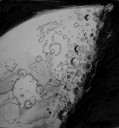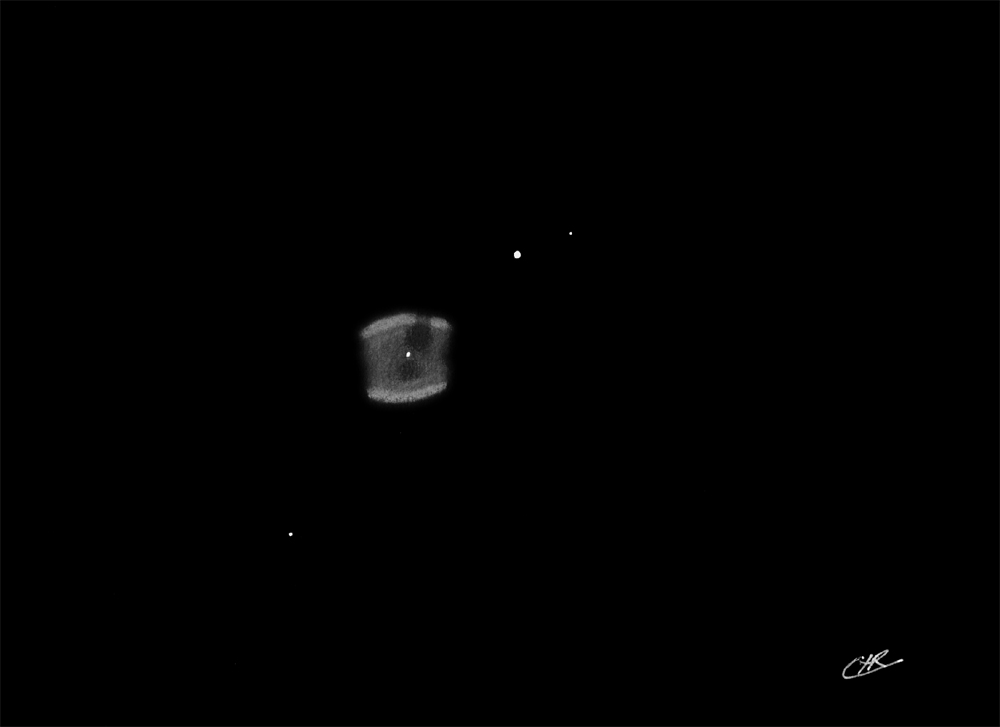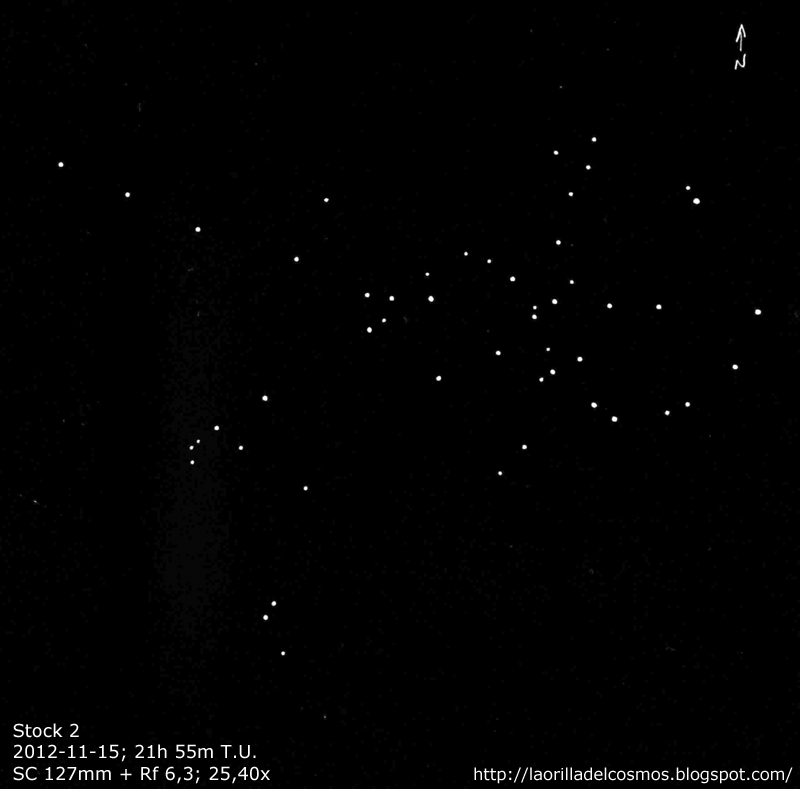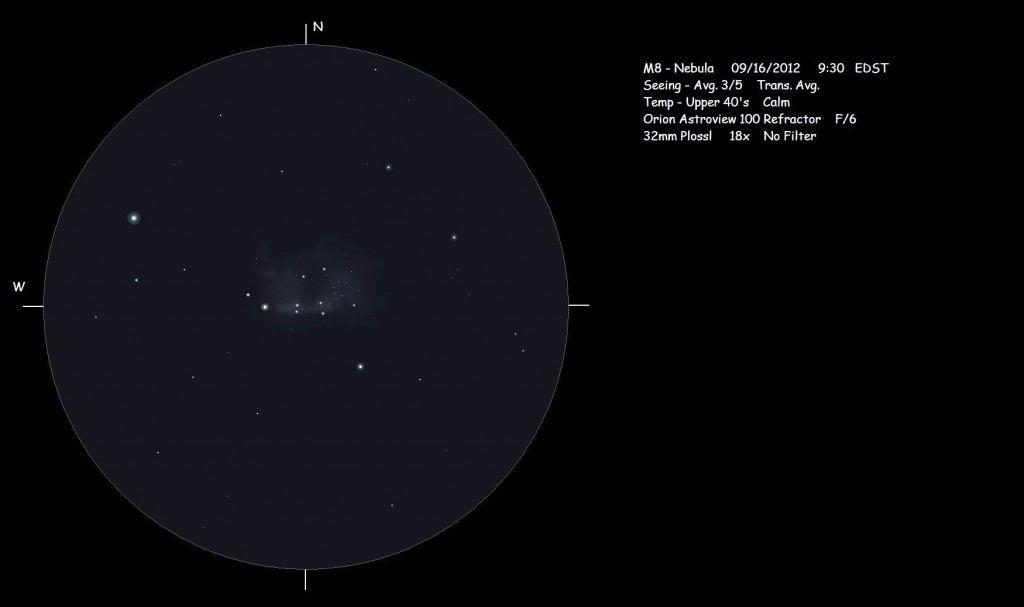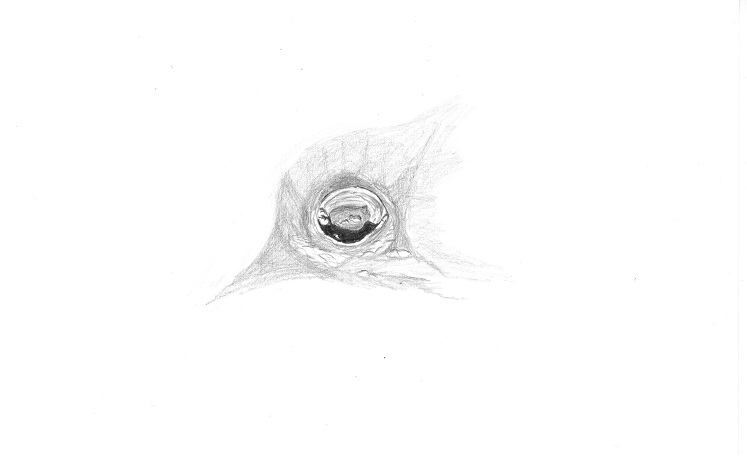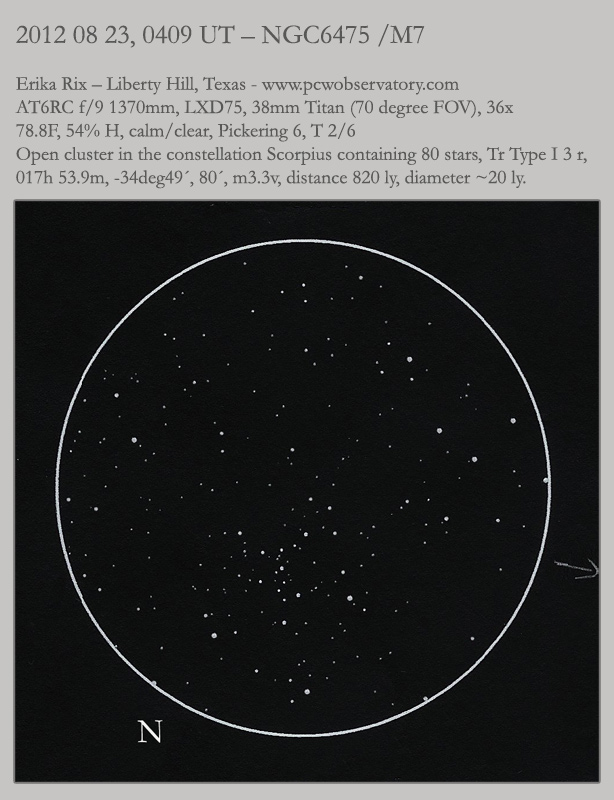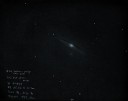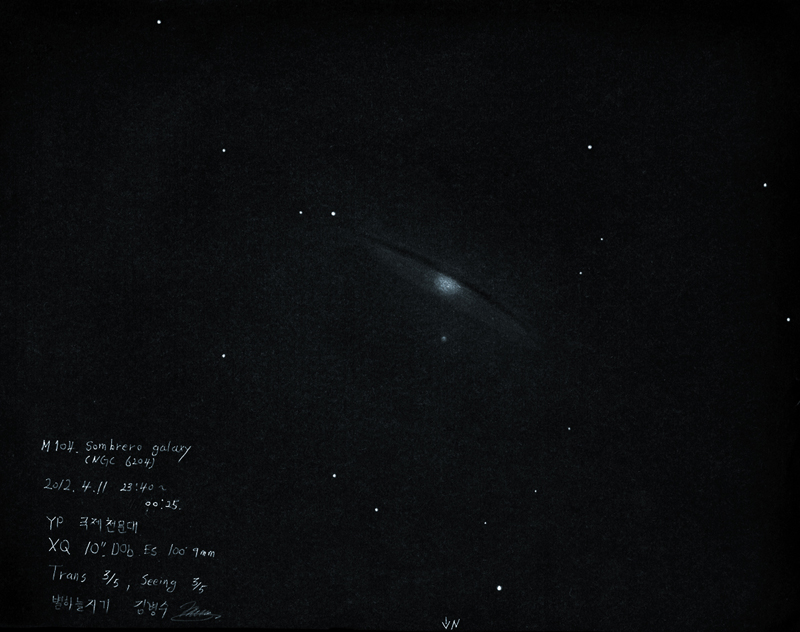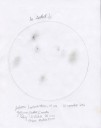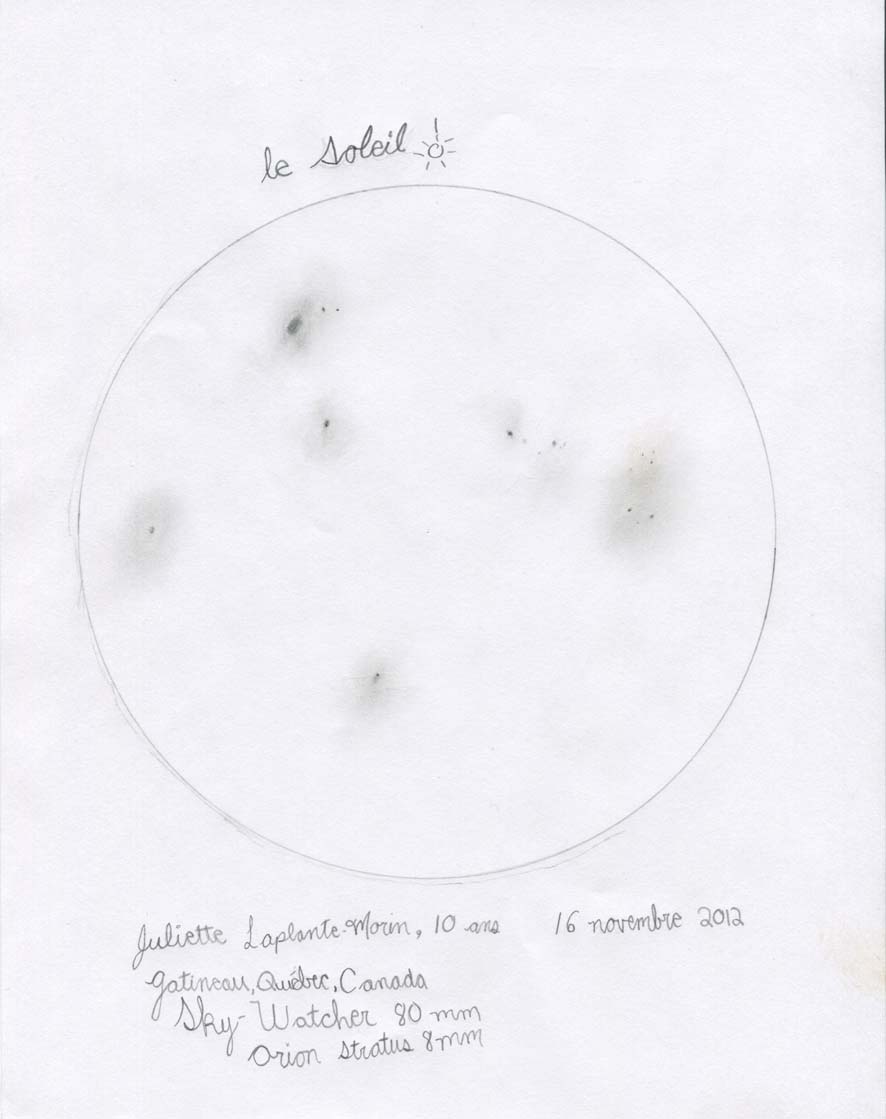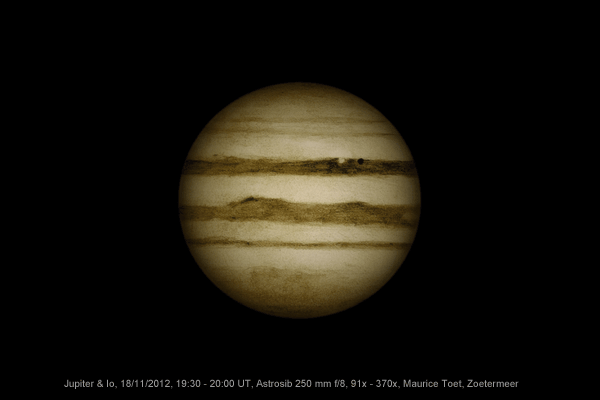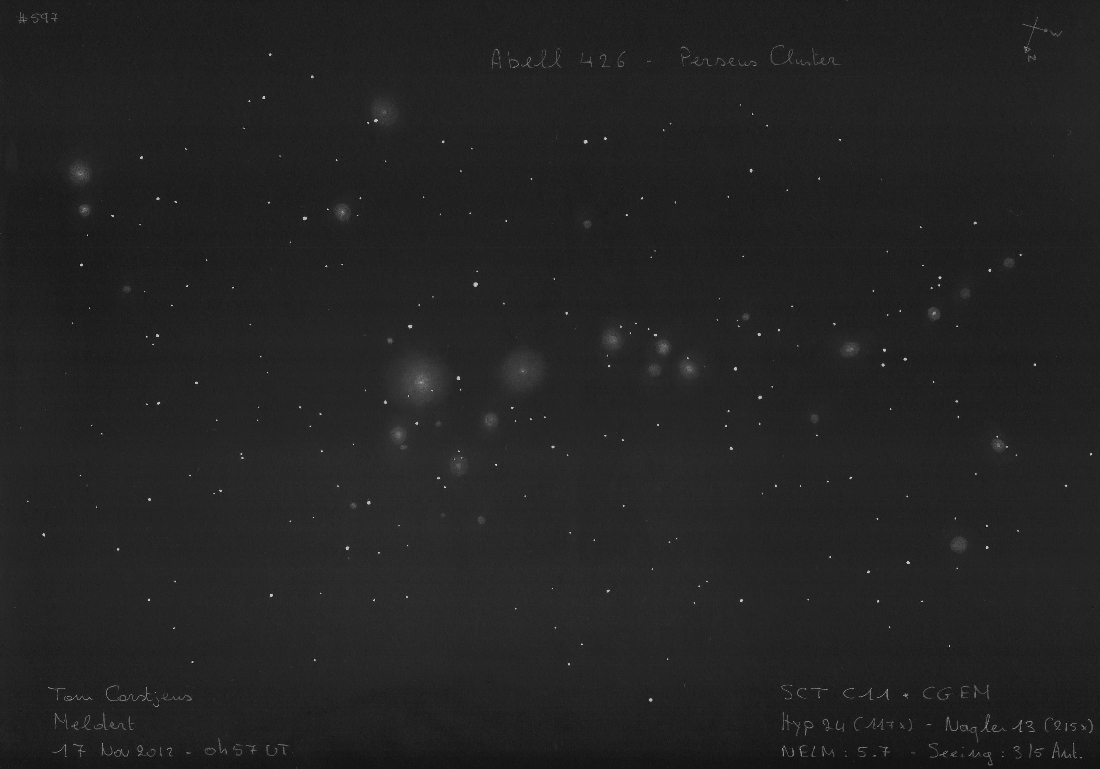
Hi!
I have always been fascinated by the shadows on lunar-terminator.
This is a contact of the brightness with the dark side. It’s looks like an ancient symbol “Yin-Yang”. The eternal meeting of day and night. The marvelous spectacle of metaphysical shadows dancing in craters basins.
These seemingly chaotic formations in fact fascinate observer by their complexity and repetition of forms!
Oh! I love sketching the Moon!
With a large mirror (41cm) and eyepiece with good contrast we can admire a lots of details on the lunar surface
My telescope Capella 41 + 14mm ES eyepiece, pencils + paper.
Yours, Robert
Sketch details:
Object Name: The Lunar “Yin-Yang”,
Object Type: Moon
Location: Poland, Oborniki
Date: 20-11-2012
Equipment: Newtonian telescope 409/1800 (Capella 41), 14mm ES eyepiece
Object: – Artist: Robert Twarogal (Ignisdei)
